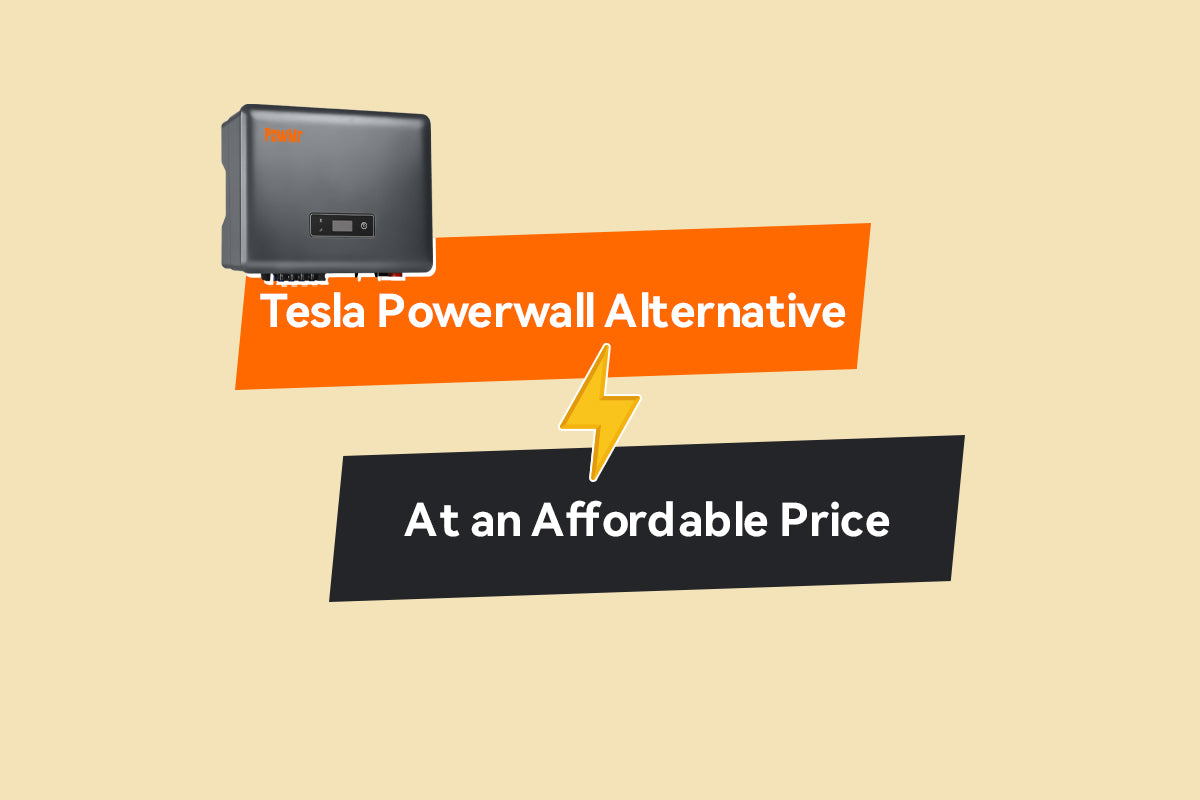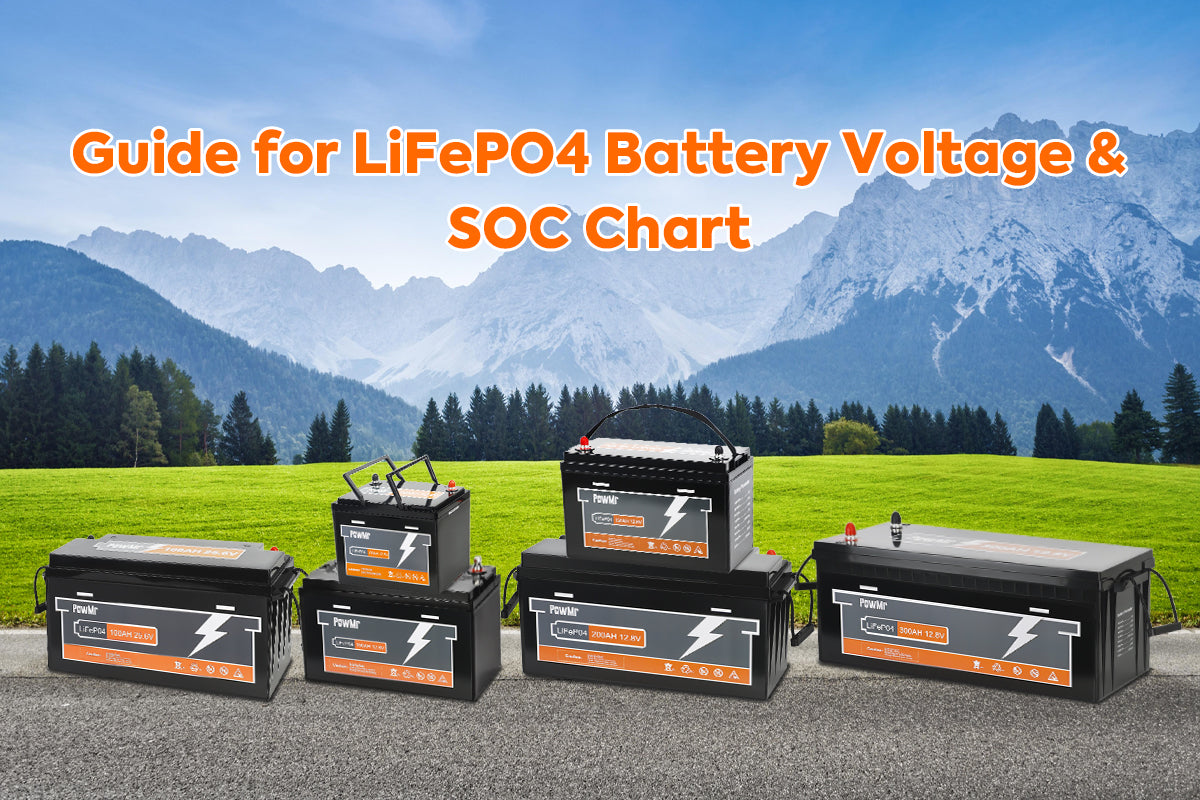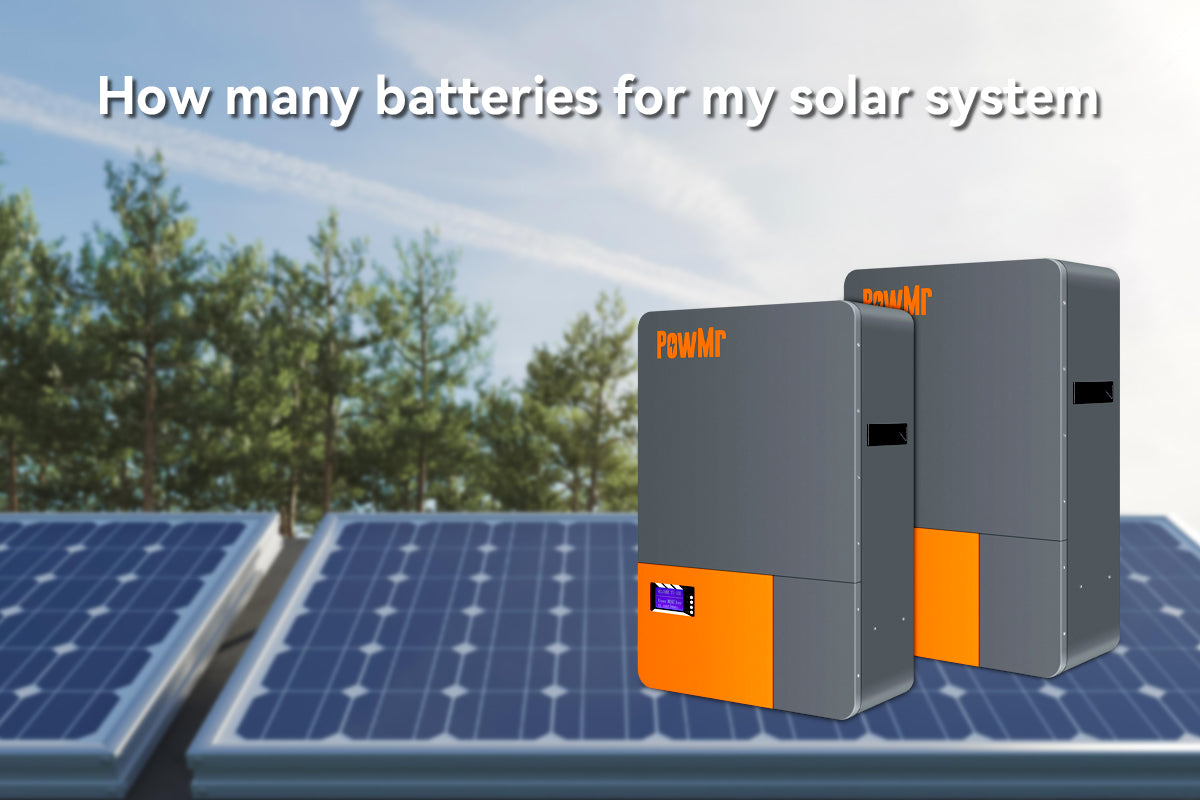Since its debut in 2015, Tesla’s Powerwall series has made significant strides in functionality and scalability. Nearly a decade later, the Powerwall 3, launched in the U.S. in February 2024 and expanding to Europe by mid-2024, brings Tesla’s most advanced technology to a broader audience, including Germany and the UK.
Unlike the Powerwall 2, which required a separate third-party inverter for solar compatibility, Powerwall 3 integrates its own inverter, creating a more streamlined, all-in-one solution. While the Powerwall+ improved upon earlier models, it has not been launched in Europe, making Powerwall 3 Tesla's first fully integrated option for international users.
However, the Tesla Powerwall’s price can be a serious concern for many homeowners, making it crucial to carefully consider the investment. In this article, we’ll provide an overview of the Powerwall while highlighting two alternative energy storage solutions that deliver comparable benefits without the hefty cost. We’ll explore various options, comparing their features, advantages, and potential drawbacks across different electricity systems.
Overview of Tesla Powerwall 3
Powerwall 3 offers increased energy storage and advanced management capabilities while seamlessly integrating with Tesla's solar solutions, underscoring the company's dedication to efficient and sustainable energy.
Key Features of Powerwall 3
1. Integrated Solar Inverter: Powerwall 3 includes a built-in solar inverter, enabling easier integration with Tesla’s solar solutions and eliminating the need for third-party equipment.
2. Peak Shaving Control: Optimize your energy consumption and reduce costs by implementing peak shaving, which allows you to shift energy usage to off-peak hours according to Time of Use (TOU) rates.
3. Energy Scalability: Powerwall 3's scalable four-unit design and Powerwall 3 Expansion offer owners a easy way to extend backup duration without requiring an additional inverter, supporting up to 40.5 kWh per unit.
4. Grid Import/Export Limit: This feature gives users control over how much energy is imported from or exported to the grid, allowing for optimized energy management based on the user’s preferences.
5. Output Power Factor Rating: Adjustable from 0 to 1, the Powerwall 3 offers flexibility in power management, allowing efficient and reliable energy delivery during grid outages.
6. Remote Monitoring and Control: Through Tesla’s app, users can remotely monitor their Powerwall’s performance, control energy usage, and manage settings from anywhere.
Alternative to Tesla Powerwall 3 for Europe User
For European customers, the SOLXPOW energy storage inverter and POW-HVB battery pack provide a powerful and adaptable energy solution, fully compliant with European grid standards and certified to meet the grid-tie requirements across most European countries.
This combination works seamlessly with both single-phase and three-phase power systems, offering a versatile and cost-effective alternative to Tesla's Powerwall 3. With advanced energy management and competitive pricing, it’s an appealing choice.
Key Features of the Alternative to Tesla Powerwall 3 for Europe User
1. Easy Integration with Three-Phase Sytem: Equipped with a smart meter, the SOLXPOW and POW-HVC setup supports both single- and three-phase installations, making it highly compatible with European three-phase systems.
Note:
Tesla’s Powerwall 3 in Europe is limited to single-phase operation. This means that in a three-phase system, Powerwall 3 can only connect to one of the three phases.
For net metering and effective power flow management across all phases, an additional Backup Gateway 2 is often needed.
However, this single-phase setup may not comply with some grid regulations, as distributors may require balanced load distribution across all phases, and an imbalance could potentially impact grid voltage stability.
2. Advanced Shade Scan Technology: Equipped with Shade Scan technology, this system continuously scans power points at the string level to locate the precise Global Maximum Power Point (GMPP). This ensures maximum energy yield from your PV plant, even under challenging shading conditions.
3. Grid Import/Export Limit: Configurable to align with rate plans, utility company requirements, or the regulatory framework governing energy distribution in a specific region.
4. Power Factor Regulation: The system includes 4 power factor control modes to absorb or compensate reactive power, ensuring compliance with diverse local regulations.
5. BMS-Enhanced Power Communication: The POW-HVB batteries offer scalable storage up to 25 kWh per unit by stacking 5 kWh battery modules. Each unit includes a BMS module for seamless integration with the inverter, ensuring efficient performance and reliability.
6. Remote Monitor and Control: Real-time remote monitoring and control allow for efficient energy management, accessible from anywhere via MetaEss.
| Specifications | Powerwall 3 | SOLXPOW + POW-HVC |
|---|---|---|
| Grid Type | Single Phase | Single Phase / Three Phase |
| Nominal Grid Voltage (Input & Output) | 230 VAC | 220/380V; 230/400V; 240/415V |
| Frequency | 50 Hz | 50/60 Hz |
| Nominal Battery Energy | 13.5 kWh | 20 kWh (min. order: 2 units, 5 kWh per unit) |
| Continuous Output Power (AC) | 3.68 / 5 / 6 / 7 / 8 / 9 / 10 / 11.04 kW | 12 / 20 / 30 / 50 kW |
| Peak Power Output | 3.68 / 5 / 6 / 7 / 8 / 9 / 10 / 11.04 kW | 1.1 Times Overloading (AC) 2.0 / 1.2 Times Overloading @60s (Back-Up) |
| Power Scalability | Up to 4 Units | Up to 10 Units |
| Energy Scalability | Up to 40.5 kWh per Unit | Up to 25 kWh per Unit (5 kWh modular battery, up to 5 units in series) |
| Max. Solar Input Power | 20 kW | 1.5 Times of Rated Power |
| Withstand Voltage | 600 V | 135 ~ 1000 V |
| Number of MPPT | 3 | 2 / 4 |
| MPPT Voltage Range | 60 ~ 480 V DC | 200 ~ 950V / 200 ~ 850V |
| Maximum Current per MPPT | 26A | 30A |
| Power Factor | 0 ~ 1 | -0.8 ~ +0.8 |
| Unit Price | £10,000 (11.04kW) | £5,714 (12kW + 20kWh battery) |
Note: Please note that the price of this alternative solution varies based on quantity purchased. Inquiries are welcome.
Pros and Cons of the alternative for Europe:
Pros:
- Priced at £5,714 for 12kw + 20kwh system, making it a more affordable option.
- Easier integration and interaction with three-phase systems align well with European power standards.
- Supports up to 10 units, providing flexibility to expand as energy needs grow.
- High MPPT voltage upper limit and equipped with Shade Scan technology to maximize energy capture, even with partial shading on solar panels.
- Includes 4 power factor modes to adapt to various European grid regulations, enhancing compliance and grid stability.
Cons:
- Due to the lack of inverter and battery integration in one unit, this system may require more physical space for installation, which could be a limitation in smaller properties.
Alternative to Tesla Powerwall 3 for American User
For American users, the POW-Sunsmart LV12K paired with the POW-LIO51400-16S battery presents a compelling alternative to the Tesla Powerwall 3.
This combination delivers exceptional performance, scalable energy solutions, and versatile compatibility with various household needs—all at a significantly lower price. The POW-Sunsmart LV12K also boasts essential grid tie certifications.
Key Features of the Alternative to Tesla Powerwall 3 for American User
1. Power and Scalability: With up to 10 kW of continuous output, the POW-Sunsmart LV12K matches Powerwall 3 in terms of power capability, and it’s easy to expand, reaching up to 60 kW across six units—ideal for large households or even small businesses.
2. Smart Peak Shaving Strategy: Managing battery charging and discharging based on local Time of Use rates. This feature allows you to reduce peak demand and electricity bill.
3. Grid Import/Export Limit: Set through software alignment with rate plans, ensuring optimized performance and cost efficiency.
4. Power Factor Regulation: The POW-Sunsmart LV12K offers an adjustable power factor range from -0.9 to +0.9, allowing users to align with grid operator standards for optimized energy efficiency.
5. Remote Monitoring and Control: With integrated Wi-Fi, the POW-Sunsmart LV12K offers complete remote monitoring and control through the i.Solar app, compatible with both iOS and Android devices for a comprehensive management experience.
6. Battery Flexibility: The modular battery design means users can start small and scale up as needed, accommodating up to 80 kWh with stackable 5 kWh battery units. This flexibility is especially useful for those looking to start with a modest setup and expand over time.
| Specifications | Powerwall 3 | POW-Sunsmart LV12K + POW-LIO51400-16S |
|---|---|---|
| Grid Type | Split Phase | Single Phase / Split Phase |
| Nominal Grid Voltage (Input & Output) | 120/240 VAC | 120 VAC (P-N) / 208 VAC (P-P) / 240 VAC (P-P) |
| Frequency | 60 Hz | 50/60 Hz |
| Nominal Battery Energy | 13.5 kWh | 20 kWh (min. order: 4 units, 5 kWh per unit) |
| Continuous Output Power (AC) | 5.8 / 7.6 / 10 / 11.5 kW | 10 kW |
| Peak Power Output | 5.8 / 7.6 / 10 / 11.5 kW | 10 kW |
| Power Scalability | Up to 4 Units | Up to 60 kW (6 Units) |
| Energy Scalability | Up to 40.5 kWh per Unit | Up to 80 kWh (5 kWh stackable battery, up to 16 units in parallel) |
| Max. Solar Input Power | 20 kW | 12 kW |
| Withstand Voltage | 600 V | 600 V |
| Number of MPPT | 6 | 2 |
| MPPT Voltage Range | 60 ~ 480 V DC | 120 V ~ 550 V |
| Maximum Current per MPPT | 13 A | 18 A |
| Power Factor | 0 ~ 1 | -0.9 ~ +0.9 |
| Unit Price | $13,500 (11.5 kW) | $7,498 |
Pros and Cons of the alternative
Pros:
- Lower upfront cost
- Higher scalability (up to 60 kW across six units) with flexible battery configurations
- Compatible with a range of grid voltages and frequencies
- Broad power factor regulation range for efficient energy use
Cons:
Conclusion - When to Choose Each Option
When considering energy storage solutions, both the Tesla Powerwall 3 and its alternatives like the POW-Sunsmart LV12K paired with the POW-LIO51400-16S or the SOLXPOW with POW-HVB battery offer unique benefits suited to different user needs.
Choose Tesla Powerwall 3 if:
Integration with Tesla Systems: If you're already invested in Tesla’s ecosystem (solar panels, electric vehicles), the Powerwall 3’s integrated inverter and seamless app connectivity can enhance your overall user experience.
Single-Phase System Requirements: If your home operates on a single-phase system and you seek a streamlined solution, the Powerwall 3's design caters directly to that setup.
Choose PowMr Solar Solution if:
Cost-Effectiveness: For those looking to maximize their energy independence without breaking the bank, the lower price point of these alternatives can be appealing. This allows homeowners to invest in additional units or other energy efficiency measures.
Three-Phase Power Systems: In regions where three-phase power is standard, the SOLXPOW inverter combined with the POW-HVC battery offers superior integration, ensuring compliance with local regulations and optimizing energy flow across all phases.
Note:
Tesla Powerwall pricing is based on third-party research, and specifications are from the official datasheet. The cost of installation and Gateway 2 were not taken into account.
Resources:
How Much Does a Tesla Powerwall Cost?



